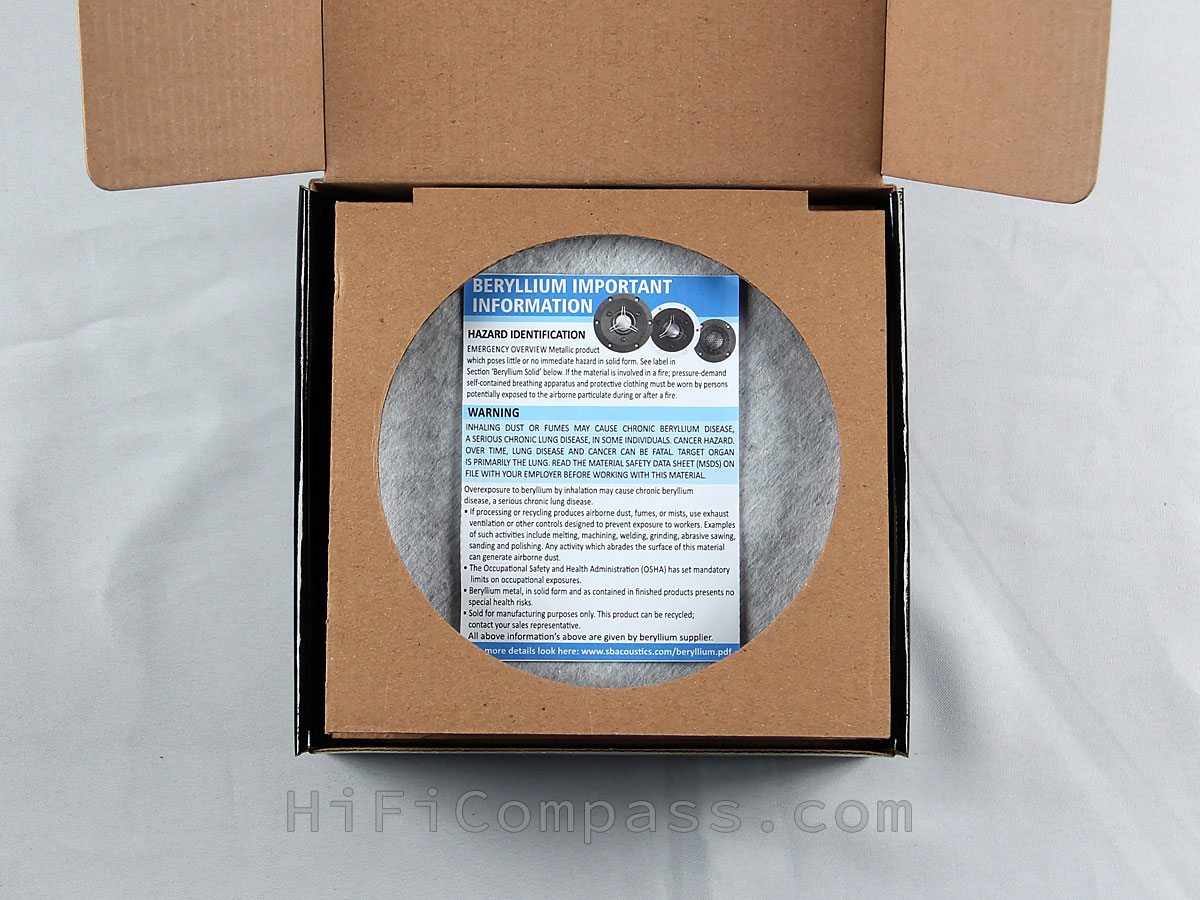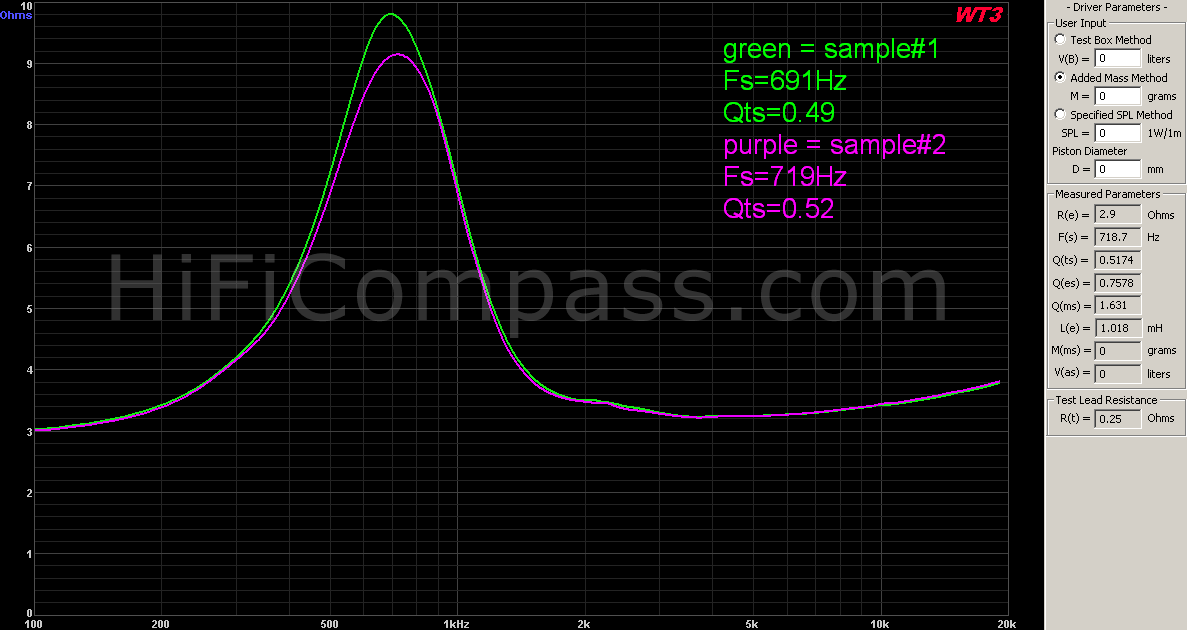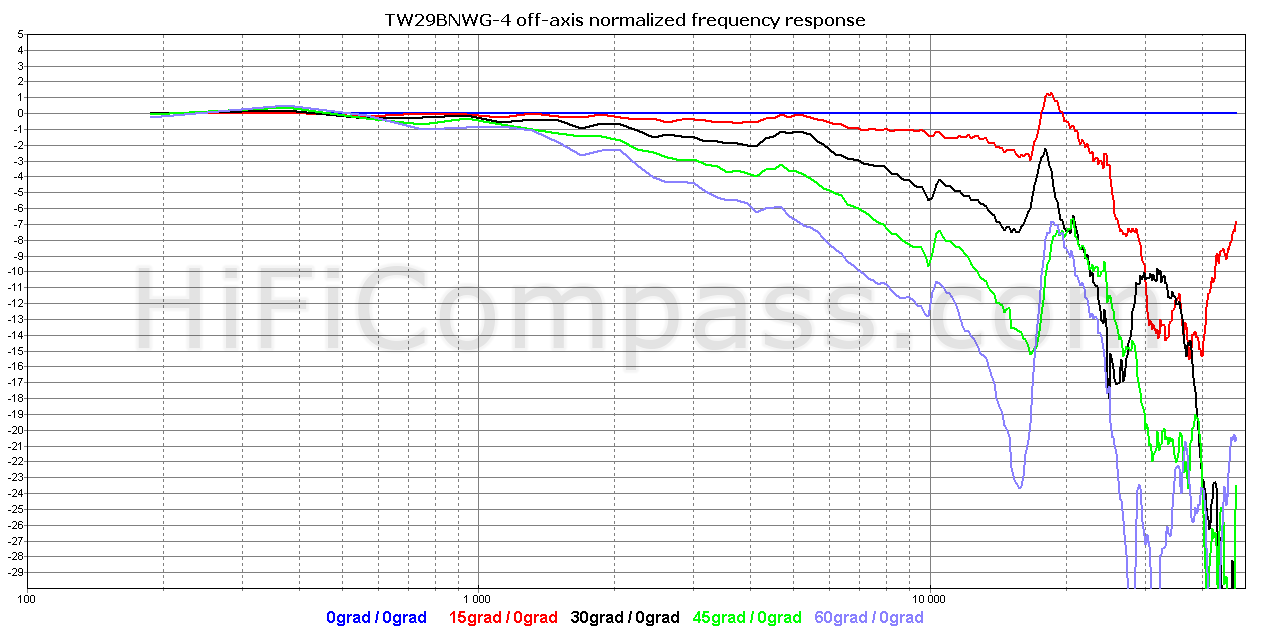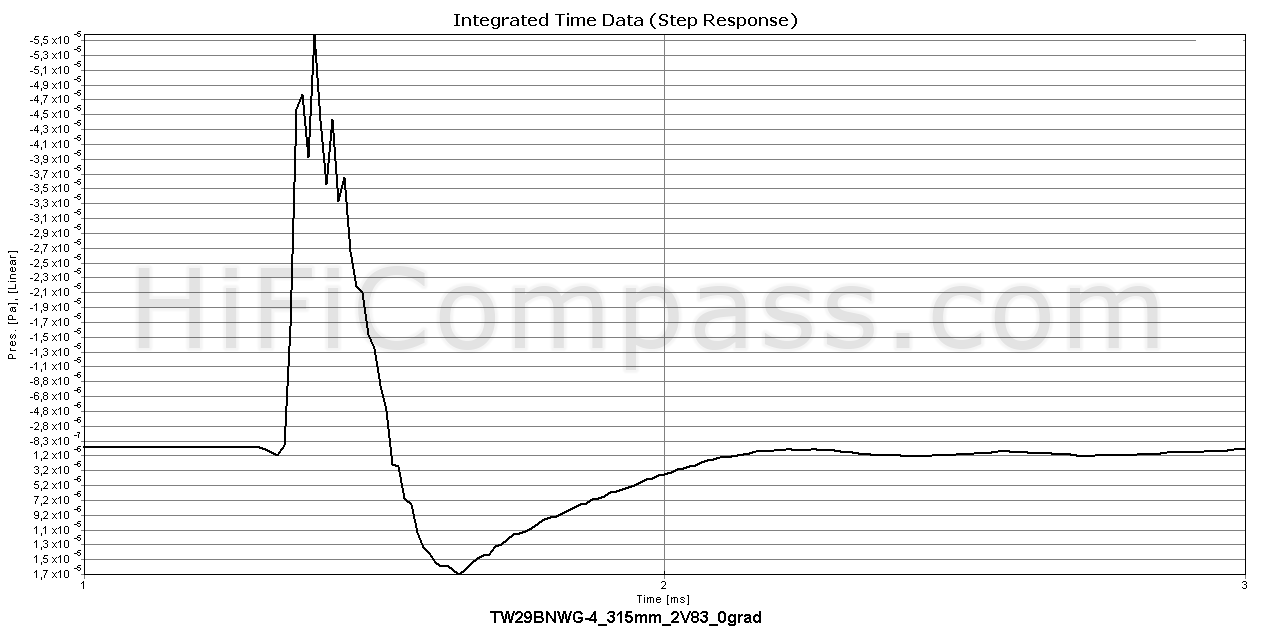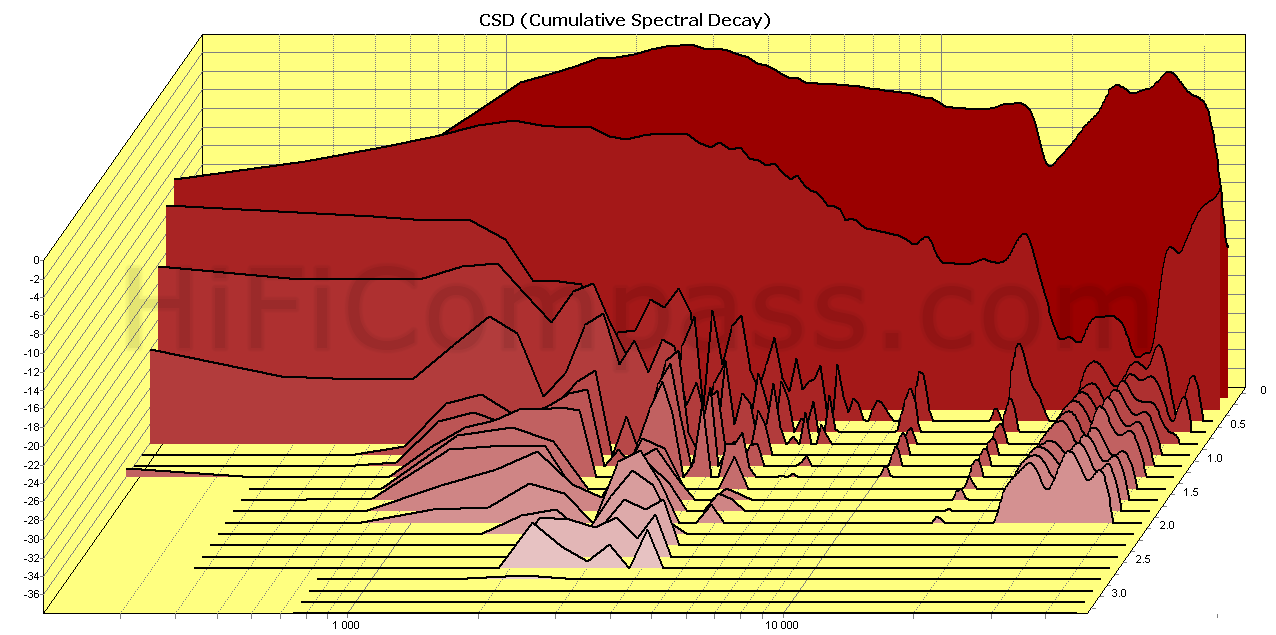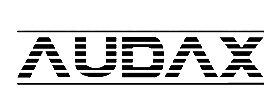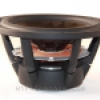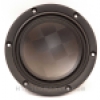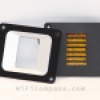HiFiCompass
Satori TW29BNWG-4
What is on the test bench?
Another one novelty from Sinar Baja Electric has appeared in the Satori line - an unusual tweeter with a beryllium membrane TW29BNWG-4. Its singularity is that, as far as I know, at the moment it is the first and only beryllium tweeter in the world, which is a factory equipped with a large and deep waveguide. The WG symbols in the model name reflect this feature. TW29BNWG-4 was first demonstrated at Munich HighEnd-2019 show. Let's remember all beryllium tweeters currently available or recently discontinued:
- BlieSMa (Germany) - T25B-6, T34B-4
- Satori (designed in Denmark, manufactured in Indonesia) TW29B-B, TW29BN-B, TW29BN-B-8
- SB Acoustics (designed in Denmark, manufactured in Indonesia) - SB29BNC-C000-4, SB29BAC-C000-4
- Scan-Speak (Denmark) - D3004/6040, D3004/6040-10, D3004/6640, D2908/7140
- SEAS - T25B001 (Norway)
- Transducer Lab (USA) - N28BE-A, N28BE-G - discontinued
Frankly, there is not such a wide choice in the whole planet.
Let me remind you the main advantages of the waveguide tweeter design:
- the directivity control to lower frequencies
- additional acoustic gain
- the compensation of additional acoustic gain when flattening a frequency response decreases nonlinear distortion and thermal compression
- possibility of obtaining a lower cutoff frequency
- the possibility to design loudspeakers with more consistent on-axis and off-axis frequency responses
- waveguides reduce the dependence of the loudspeaker sound on the acoustic properties of the room
- provide better localization of instruments in the sound image
Here you can learn about the history of the SB Acoustics and Satori brands, as well as one of the world's largest speaker drivers manufacturer - Sinar Baja Electric (www.sinarbajaelectric.com).
Why do we test this?
Sinar Baja Electric has kindly provided seven of its latest models for independent testing:
Tweeter SB Acoustics SB21SDCN-C000-4
Tweeter SB Acoustics SB21RDCN-C000-4
Tweeter Satori TW29TXN-B
Tweeter Satori TW29BNWG-4
Midrange Satori MD60N-6
Midwoofer Satori MW16TX-4
Midwoofer Satori MW19TX-4
Since all the models are just beginning to enter the market, it is impossible to find any additional information, except for meager numbers from the datasheets. Today's review opens a series of tests, the purpose of which will try to make up for the lack of information and to acquaint everyone with detailed technical characteristics and application features of the new speaker models
I would like to express my deep gratitude to Sinar Baja Electric company for the provided new products, as well as personally Mark Thomsen (International Sales & Marketing Manager SB Audience | SB Acoustics) and Melly Wulandari (SB Acoustics Project Manager) for their assistance in implementing the series of reviews.
What did the manufacturer state?
Of all the parameters I would highlight the high sensitivity - 97 dB/2.83 Volt*1m (despite the relatively high moving mass - 0.46 g) and the low resonance frequency - 700 Hz.
Visual inspection
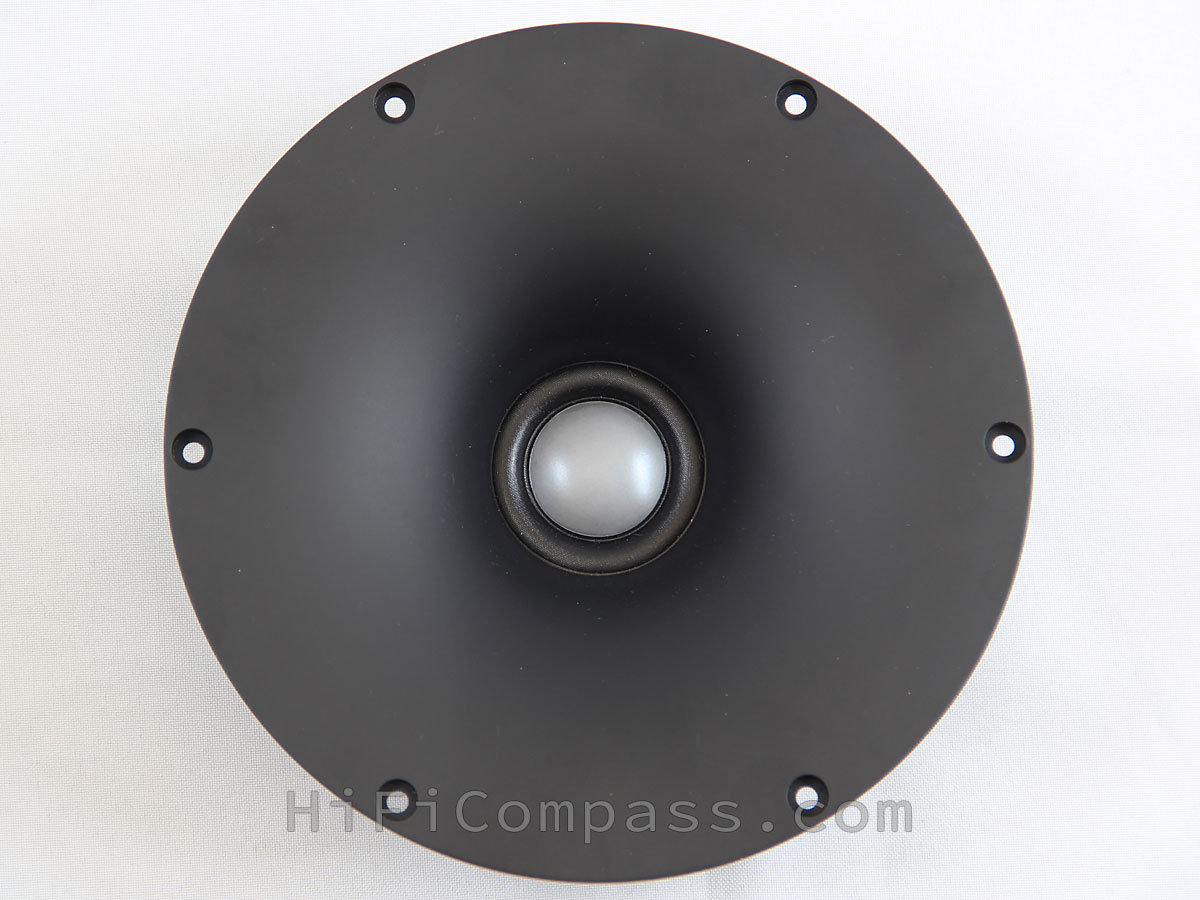 |
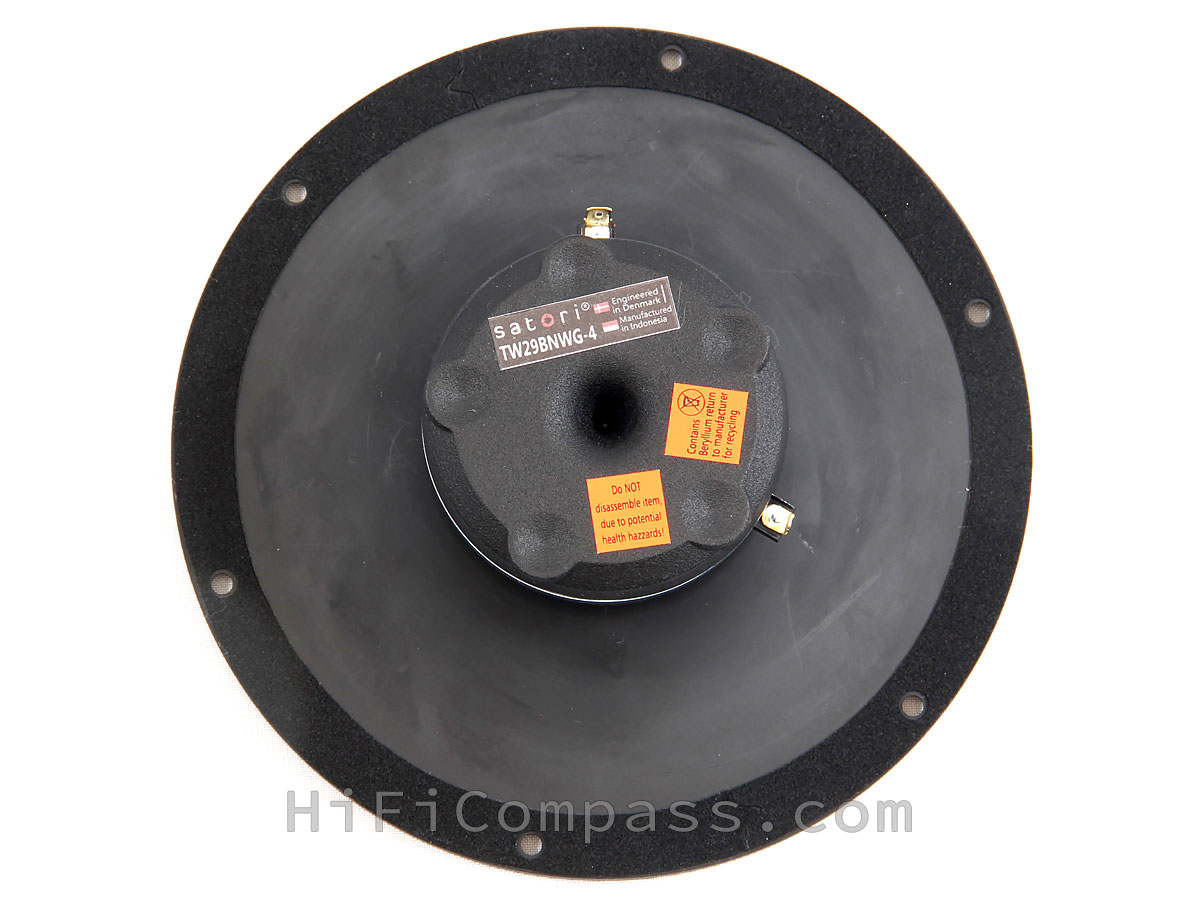 |
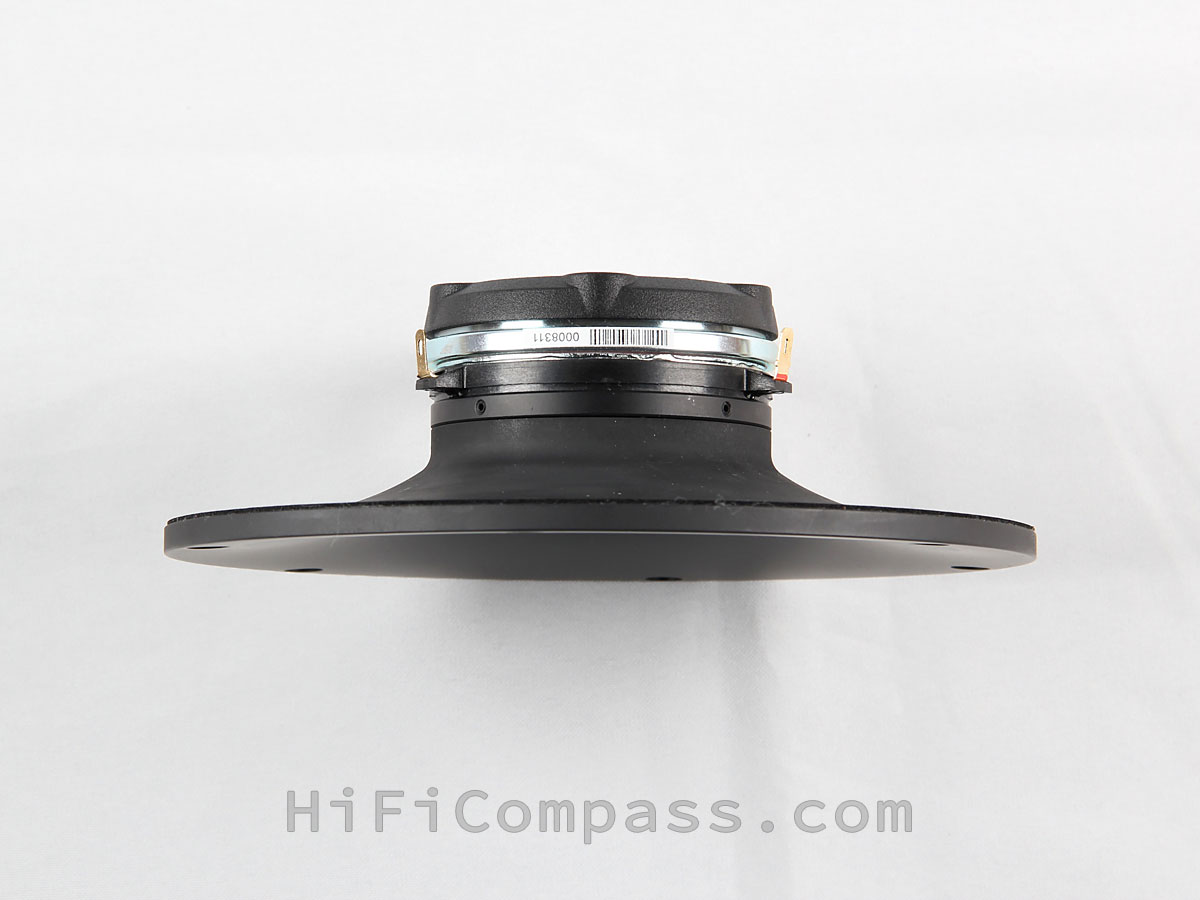 |
TW29BNWG-4 comes in a sturdy glossy corrugated cardboard packaging. Inside the box the speaker "sits" in the hole of the U-shaped cardboard frame and is pressed from the front side with a double cardboard spacer. To protect the tweeter from a dust, accidental scratches and abrasions, it is covered with a very soft cloth. Everything is simple and very reliable. The packaging is exemplary.
The production quality is exemplary, there is nothing to complain about. Perfectly fitted parts, complete absence of any cosmetic defects, no burrs, distortions, chips and traces of glue. The label is perfectly aligned.
The massive aluminum waveguide, which is also a mounting flange, is painted black matt powder. It is attached to the tweeter with a special mounting ring and four hex head screws. This type of the waveguide mounting makes it easy to detach, allowing users to experiment with their own waveguides - a good idea!
A foam rubber gasket is glued to the back of the waveguide. There are no any protective elements to prevent the damage of the fragile beryllium membrane. It seems, the designers thought that the waveguide depth would be enough for that. However, you need to be very careful when handling the tweeter, as the accidental fall of magnetic particles inside the waveguide can lead to the failure of the tweeter.
The back chamber of an complex shape is made of aluminum and covered with a black micro-textured powder coating. In the central part there is a very deep cone-shaped funnel that forms a corresponding cone in the inner cavity, penetrating through the vent hole in the pole piece of the motor. On the back chamber there are five concentrically located dimples, which, in my opinion, also form the profile of the internal cavity. All these measures are aimed at optimizing the internal air flow inside the motor and reducing the reflections of sound energy emitted from the back of the membrane.
When tapped with a finger, the center part of the back chamber slightly responds with a ringing in the 5 kHz region. I don’t know if this could have any effect on the tweeter's work. We'll see.
The side surface of a massive ring neodymium magnet is visible between the back chamber and the plastic frame of the moving system.
The gold-plated terminals are pressed into “ears” of plastic frame. There is a lot of space around them, so connecting to them is very convenient and easy. However, the terminals and plastic "ears" are flimsy and there is a risk of damage with careless handling.
A gray, with a slight matte sheen, low profile beryllium dome membrane is visible in the waveguide throat.Its 29mm diameter gives a feel of noticeably larger size compared with common 26mm membranes. The sense of size is further enhanced by the very wide, low-profile fabric surround. This dampened fabric looks and feels similar to that found on all the Satori and SB Acoustics tweeters. It is not sticky, but likes to collect dust.
Well thought out design and excellent workmanship!
Impedance frequency response
Thanks to a motor with a copper sleeve the impedance curve exhibits extremely low inductance and rises with frequency. The response is quite smooth, but there is a slight "ripple" around 2 kHz, 4 kHz, 10 kHz and 14 kHz that can only be seen at a large scale. A slight "swelling" in the 2.3 kHz region is an echo of the interaction of the moving system with the back chamber. There is nothing to care about, in my opinion.
The impedance response tells us about the excellent motor and well damped moving system and the tweeter internal cavity. The parameters consistency is good.
On-axis frequency response
In the range up to 16 kHz the frequency response is quite smooth and there should be no problems with its correction.
Between 16 kHz and 23 kHz there is an up to 7 dB dip in the frequency response. One of the reasons may be the non-optimal interaction of the tweeter membrane with the waveguide throat and the associated excitation of radial standing waves inside the throat. This dip can result in a slight loss of airiness, but luckily it is outside the audible range of the vast majority of audiophiles, which I also belong.
Beginning from 25 kHz, the beryllium membrane goes to the break-up mode of operation, accompanied by "nervousness" of the frequency response. However, the Danesian Audio designers did an excellent job on taming the membrane resonances and instead of the usual high peak we observe only a slight unevenness of no more than 4 dB in the 25-42 kHz range.
The responses of the two samples are very close each other almost up to 22 kHz. Their difference is on average about 0.3 - 0.5 dB in the range 4 - 15 kHz. It is quite acceptable for tweeters unsorted in matched pairs at a factory.
The measured on-axis frequency response agrees well with the datasheet.
Off-axis frequency responses (at 315 mm)
Above are the plots of the regular and normalized off-axis frequency responses. For the normalized plot the axial frequency response is taken as the reference and the off-axis ones reflect only the difference with it.
With off-axis deviation and increasing the frequency to 14 kHz the curves fall off smoothly and monotonously. The waveguide causes the beginning of the roll-off from lower frequencies compared with its non-waveguided version Satori TW29BN-B. This ensures smooth matching with the directional pattern of the large midwoofer.
The normalized plot shows a hump in the 5 kHz region. It can be a little confusing, since in reality this hump doesn't exist on the off-axis curves, but it arises due to the normalization to the axial frequency response, which has a small sag in this area.
At 10 kHz jaggies are visible, which are difficult, but also detected by the impedance frequency response.
The problematic range of 16-23 kHz with a dip in the axial frequency response does not look so bad on the off-axis curves. The 15 and 30-degrees curves are more or less even here, and the 45 and 60-degrees ones even show a rise! It seems, that after averaging in a sufficiently wide solid angle, the dip in the axial frequency response will be substantially leveled. If you choose exactly 15 degrees as the loudspeaker reference axis and shape the target frequency response for that particular angle, then the result should be very good.
The datasheet's off-axis responses doesn't correspond to reality. It seems that the manufacturer's 60-degree frequency response is more similar to that measured at 45 degrees, and the 30-degree response is more similar to that measured at 15 degrees.
Harmonic distortion (at 315 mm)
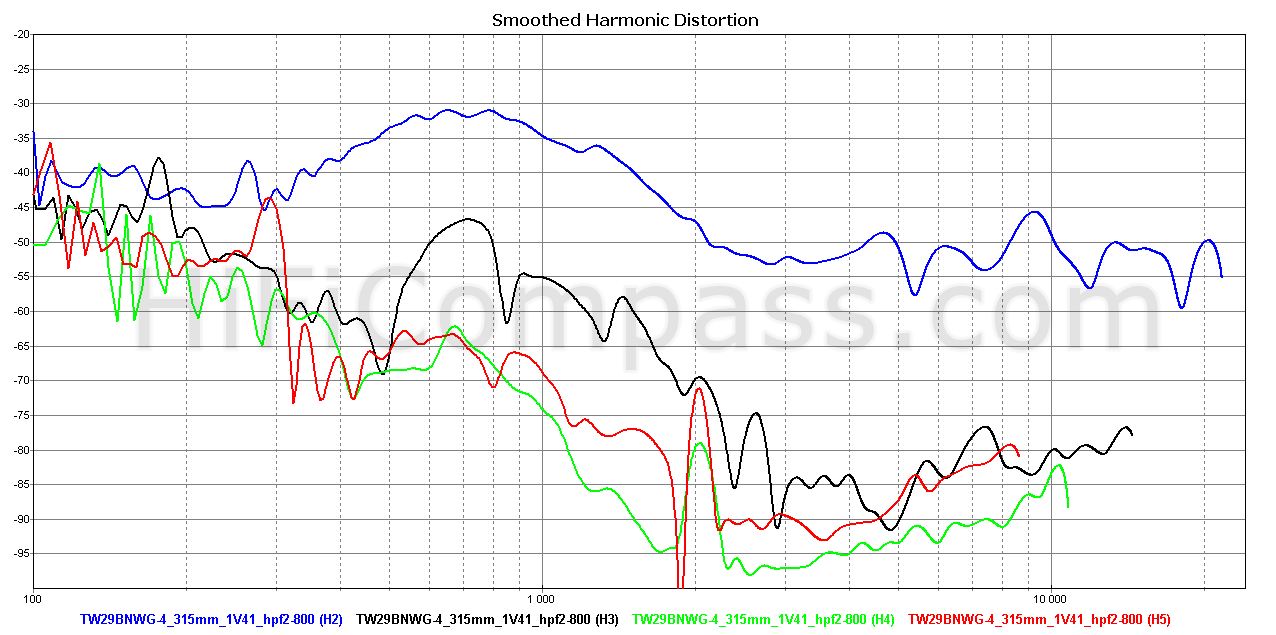 |
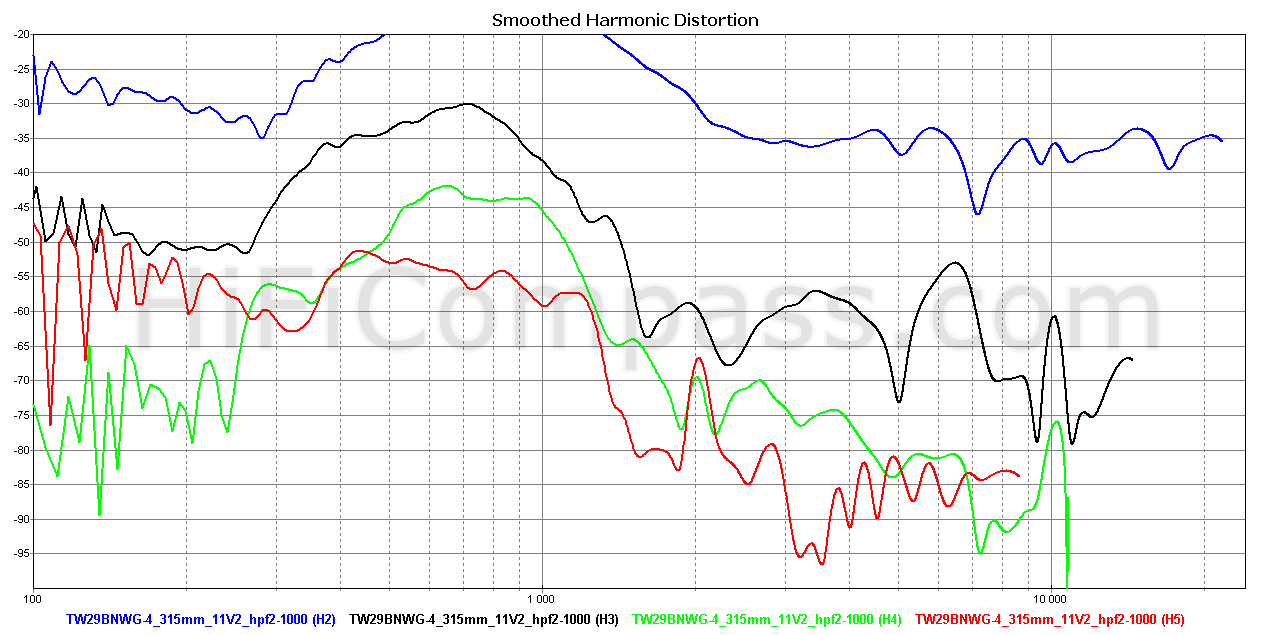 |
Above are the harmonic distortions plots for the 2nd - 5th harmonics at average sound pressure levels of 92 and 110 (!!!) dB (at voltages of 1.41 and 11.2 V respectively). To limit the speaker overload in terms of thermal power and membrane displacement when measuring harmonic distortion, a second order Butterworth type high-pass filter with a cutoff frequency of 800 Hz (1000 Hz at the voltage of 11.2 V) was used.
The second harmonic dominates the entire frequency range at all sound pressure levels. The third harmonic goes 20-30 dB lower, and the fourth and fifth even lower with a large margin. The harmonic distortion pattern is stable at both frequency and SPL. There are no sudden abrupt jumps in distortion over the entire range due to the membrane break-up, especially at high SPL. With an increase in the input voltage, starting from 2 kHz and below, harmonics of all orders begin to grow monotonically.
I would rate the harmonic distortion of the TW29BNWG-4 as "very low", one of the lowest I have ever seen in tweeters. Excellent!
I decided to check how the frequency response correction, which will inevitably be applied in the loudspeaker crossover, will affect the harmonic distortion. By means of a DSP I added only one biquad element of the shelf type correction. Below are the results for the 2nd and 3rd harmonics for the corrected tweeter. The second harmonic has decreased strictly in accordance with a level of the added frequency correction. The decrease has reached about of 6 dB at low frequencies and it's not a little.
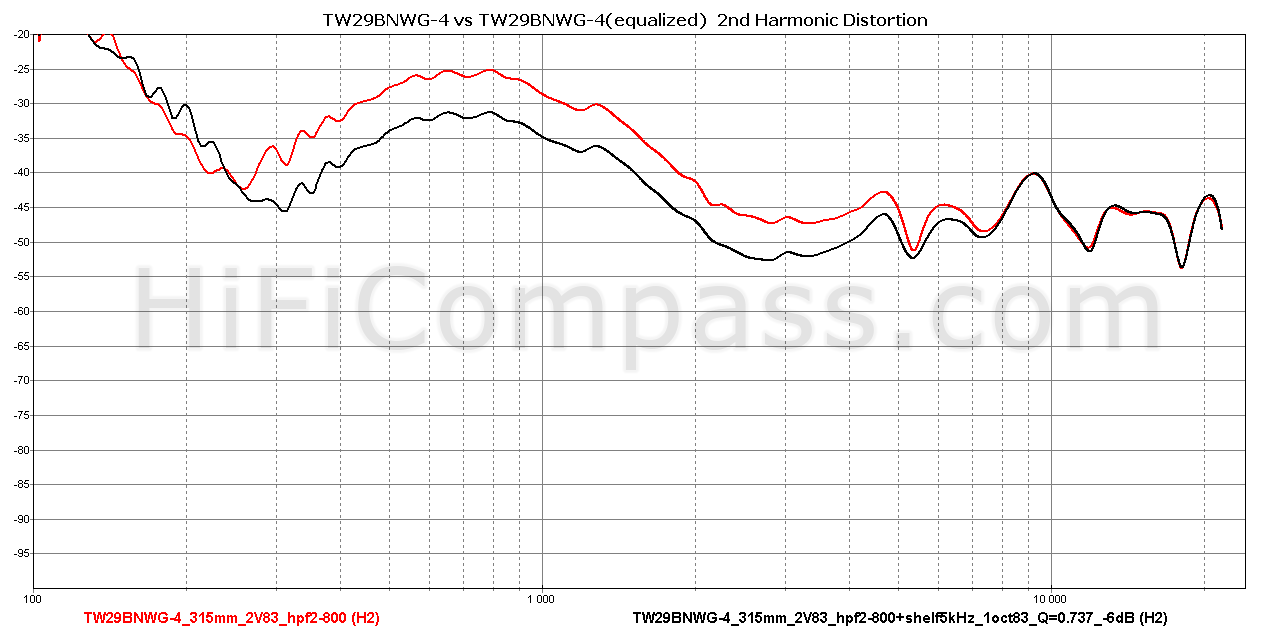 |
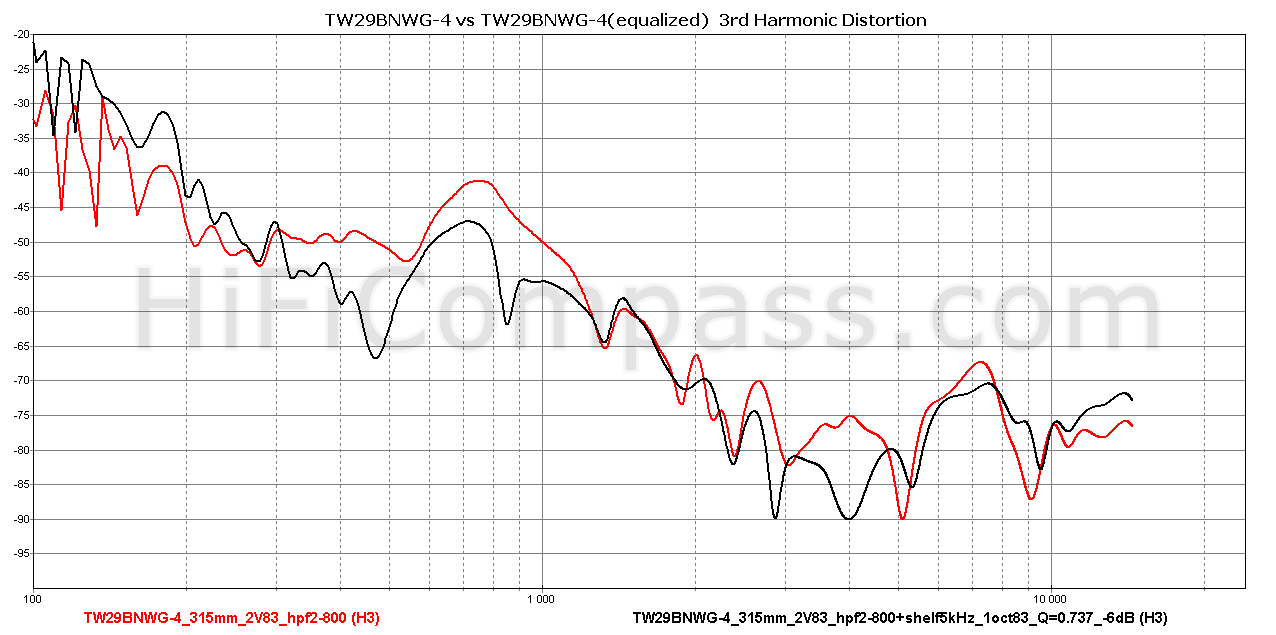 |
Voice coil current harmonic distortion
 |
 |
This type of measurement, despite its simplicity, is an excellent tool for assessing the linearity of a speaker motor. The above plots show the frequency dependences of the 2nd, 3rd, 4th and 5th harmonics of the voice coil current at 1.41 and 5.6 Volt. To limit the speaker overload in terms of thermal power and membrane displacement when measuring harmonic distortion, a second-order Butterworth type high-pass filter with a cutoff frequency of 800 Hz was used.
Voice coil current nonlinearity is the direct nonlinearity of the mechanical force driving the speaker cone, since this force is related to the current by a simple relationship F=B*L*I, where B is the magnetic field strength, L is the length of the voice coil wire inside the magnetic gap and I is the current. So, in principle, it is practically impossible to obtain sound pressure distortion lower than current distortion in the frequency range where the contribution of the motional nonlinearity becomes insignificant.
The voice coil current harmonics behavior is very similar to the SPL harmonic distortion, with only exception that the 2nd harmonic of the current is much less than for the SPL. One of the reasons may be non symmetrical radiation of the tweeter surround. The effective radiation area of the TW29BNWG-4 very wide surround is no less than 50% of its membrane area, so it contributes significantly to the overall linearity of the tweeter.
Intermodulation distortion
The intermodulation distortion measurement is one of way of analyzing device non-linearity. It is not an alternative, but an additional method and allows you to identify the spectral components of the inharmonious structure, which are much more harmful for high-quality sound reproduction and to which our hearing is more sensitive.
- test frequencies
- 2nd order harmonic distortion components for the test frequencies (2nd HD)
- 3rd order harmonic distortion components for the test frequencies (3rd HD)
- 2nd order intermodulation distortion amplitude (IMA2)
- 3rd order intermodulation distortion amplitude (IMA3)
 |
 |
As you can see, just a couple of frequencies at the speaker terminals give rise to a whole forest of parasitic components at its output. The second order IMD component is -63 dB for the 19+20kHz pair. This is a very good measure.
When overloaded with a 1 kHz sine voltage of 2.83 Volts the IMA2 is only -36 dB for the frequency of 10 kHz, so you should be very careful when choosing the low cutoff frequency and a filter slope for the tweeter.
Step response
The step response demonstrates excellent slew rate and fast return to the zero line. It makes only one, but a large deviation in the negative direction beyond the zero line, after which it asymptotically goes to the rest state. This deviation is due to the specific frequency response of a waveguide loaded tweeter. After the frequency response correction the step response will be the same as for a tweeter without a waveguide.
Waterfall
The waterfall shows the same effects as a step response, in addition exposing hidden resonances that are difficult to see in other types of measurements.
There is a very short "tail" at 10 kHz, which left its mark at the impedance and frequency responses too. There is also a small "tail" at 16 kHz, which is the pay for the frequency response dip in the top octave.
Between 20 and 40 kHz we see a wide and long "tail" of membrane breakups. It's well the "tail" instantly falls and goes further at a low level, and not slowly falls, as, for example, in the SEAS 27TBCD/GB-DXT tweeter. This should have a favorable effect on the sound.
The disturbances in the 1.5-4 kHz region are associated with measurement artifacts.
Listening impressions
TW29BNWG-4 sounds like a tweeter with a rigid beryllium membrane should sound - very transparent, clean, detailed. Percussion instruments are reproduced with incredible energy and realism. Due to the wide fabric surround and the 2nd harmonic dominance, there is a noticeable softening component in the sound, which does not allow it to cross the line of excessive sterility and dryness. In fact, we hear a sound blend from a beryllium-fabric speaker.
I compared the TW29BNWG-4 tweeter with its non-waveguide the TW29BN-B version. Due to the significant difference in the radiation patterns, the tweeters sound very different. The TW29BNWG-4 sounds more focused, with better localization, but overall less spatially and airy. The TW29BN-B creates a more distant and a little blurry sound image, less energetic, but more spacious and airy. This distinctive difference is not due to specific tweeter models, but to a way of sound radiation.
The main purpose of that compare was to asses the audibility of the 16 - 23 kHz dip in the axial frequency response of the TW29BNWG-4. Maybe because the upper threshold of my hearing is limited just by the frequency of 16-17 kHz, but I did not feel any principal difference in the reproduction of the top frequency octave in both tweeters, so, that defect of the frequency response looks much worse on paper than in real life.
"How to use" recomendations
The TW29BNWG-4 can be used in both two- and three-way loudspeakers of the highest level. Due to the very low distortion and the additional acoustic gain provided by the waveguide, the lower cutoff frequency can be really very low. If you are not going to squeeze maximum loudness out the tweeter, then you can even get the cutoff as low as 1 kHz! It all depends on the desired maximum SPL and your individual sensitivity to harmonic distortion.
Well, and, of course, the waveguide will allow you to smoothly match the angular dispersion of the tweeter with a large midrange and achieve a more uniform "irradiation" of a room.
What is the price and where to purchase it?
The TW29BNWG-4 are already on the market. The retail price is €315-349 per piece excluding VAT. It can be purchased in the following online stores:
- https://www.madisoundspeakerstore.com/beryllium-dome-tweeters/satori-tw2...
- https://www.audiohobby.eu/ru/sb-acoustics-tweeters-satori/15130-sb-acous...
- https://audio-hi.fi/ru/sb_acoustics_tw29bnwg-4-p-5097.html
Summary
The behavior of the original waveguide doesn't look ideal due to the dip in the axial frequency response in the 16-23 kHz region, however, this design is perhaps the best that can be achieved for the existing configuration of the membrane and wide fabric surround. Off-axis responses smooth out this dip well enough. My listening test showed no signs of that on-axis dip.
The testing has confirmed a close correspondence of the measured parameters and characteristics to those declared by the manufacturer, with the exception of off-axis frequency responses.
Based on the measurements and listening results, I consider the TW29BNWG-4 one of the best available tweeters today regardless of price.
Summarizing the above, I can highlight the following:
- high sensitivity - averaged 96 dB/2.83 V*1 m
- very low harmonic distortion
- absolute dominance of the 2nd harmonic distortion in the entire range
- can be used down to 1 kHz
- low intermodulation distortion
- off-axis responses doesn't correspond to the reality
- good consistency of parameters and characteristics
- excellent production quality
You can get more information about the measurement results here
Yevgeniy Kozhushko/15.02.2021
CONTACTS
- Ukraine
- (+380) 95 904 7827
- hificompass@gmail.com
LAST NEWS
-
04 Mar 2025
-
25 Feb 2025
-
10 Feb 2025
-
01 Feb 2025


